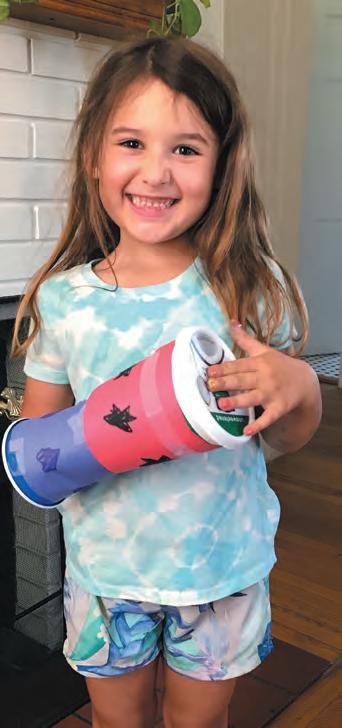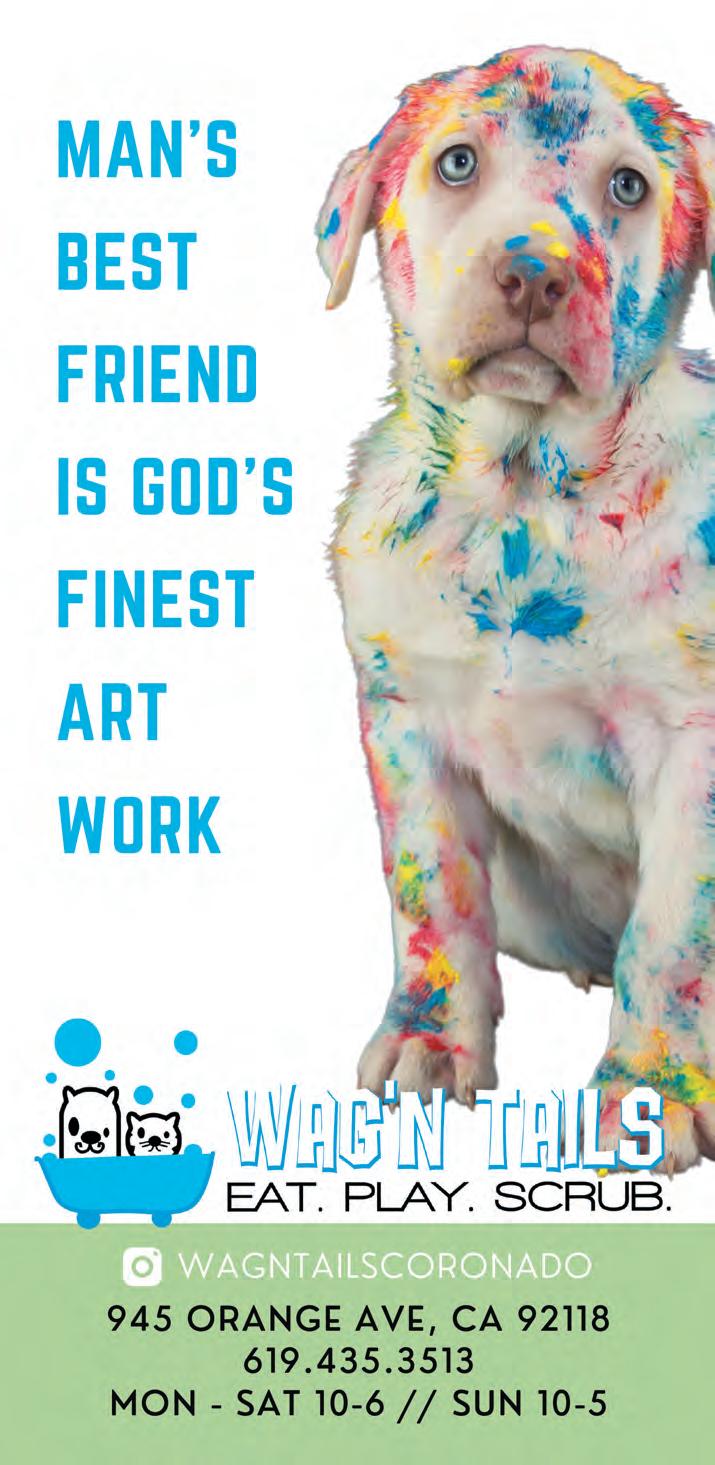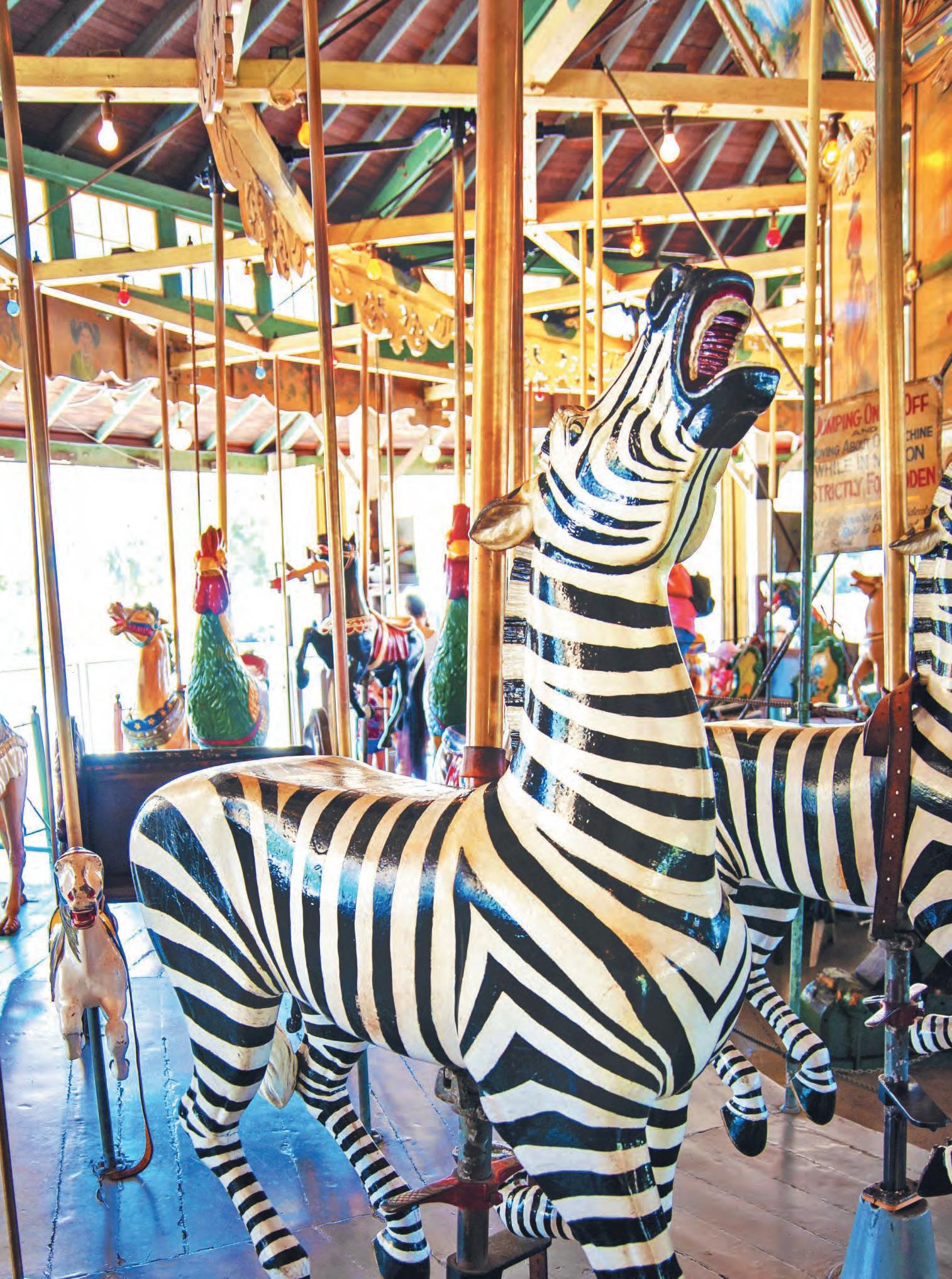
7 minute read
COMMUNITY: Art Education in a Pandemic
“Creativity takes courage,” claimed French artist Henri Matisse, and never before has that been more apparent than during this global pandemic. Hundreds of students in Coronado Unified School District are enrolled in art classes, where creativity thrives, although for most of this year they attended school remotely. So how does art education occur in a virtual environment, and what strategies have our art instructors employed to make art instruction come alive when teaching on Zoom?
Advertisement
“This year has definitely been a challenge,” according to CHS art teacher Laura Hill. When faced with the reality that they would be teaching virtually, she reached out to her CHS art teaching colleagues, Ken Hekested and Kelly Telebrico, to brainstorm. “I said to them, let’s do something different! Let’s cull our resources and collaborate in ways we’ve never done before.”
This year, art instruction at CHS has taken a courageously creative and innovative turn. “We wanted to do something that would actually improve the student experience,” Laura explains. Content delivery presented the first dilemma. Historically art classes at CHS, like woodworking taught by Ken, ceramics lessons delivered by Kelly and fine arts instruction provided by Laura have been “studio art” courses, where teachers and students take a “hands on” approach – hence the conundrum when classroom studios are closed.
The next challenge – Zoom. “We were all beginning distance learning teachers,” explains Kelly. “A year ago, we were teaching in an entirely different format.” This teaching trio devoted their summer break to mastering new technologies and trying new techniques. “In a lot of ways, it was like each one of us having our first year of teaching again,” she continues. “Starting from scratch was very scary at first. But by working together as a team, and as a department, we were all able to put forward our best work.”
This year, unlike the past, students enrolled in their art classes receive instruction in multiple mediums. Students in Introduction to Art also receive instruction in woodworking and ceramics, and students taking woodworking benefit from learning other artistic techniques. So far this year students have engaged in a variety of projects, from crafting ceramic pinch pots and creating ancient Mimbre bowl designs, to constructing intricate paper sculptures or recreating famous works of art for the #nadoartchallenge.
Each teacher takes the lead on the medium and technique of their artistic expertise, creating two-to-four-week units of study culminating in a project where students use the knowledge and skills they have learned. “I’ve been here for 25 years, and I never anticipated that the level of work for these students would be as remarkable as it has turned out to be through Zoom,” Laura exclaims, and all this coming from such differing talents.
“This year has been a period of reinventing and redefining what we do,” explains Ken. “None of these projects are projects I’ve ever taught before. Everything is new.” He goes on to explain, “From our perspective, we are thinking, how can we challenge these kids to be divergent thinkers from home plus have them feel creative.”
In order to do so, each teacher recognizes that students working from home have limited supplies. For Ken’s woodworking courses, students use cardboard and paper. “We can’t use wood, because the kids don’t have machinery at
home,” he notes, explaining that even using a different medium his students still acquire both fundamental and more advanced skills. “During first semester, I designed projects that teach my students skills that will be transferable when they return to the classroom,” he notes. “They’re using the same techniques with cardboard that they would with wood, so they still learn the basic sensibility about it.”
Ceramics teacher Kelly took her instruction one step further, explaining that students don’t need a studio and a potter’s wheel to create with clay. “A lot of the time, clay can seem inaccessible because you think you need all types of equipment,” Kelly notes. To prove that wrong, she created packets of materials for students, which she refers to as “mobile clay studios” in ziplock bags.
She explains that much of what students need can be found at home. Along with potter’s clay, each budding artist receives a sponge, plastic cutlery and paperclip. When possible, students pick up their supplies on campus, ensuring her classroom instruction is accessible to all. “This makes it less elitist,” she notes. “Plus, it makes it exciting that we can create projects with clay for kids who don’t have all the benefits we have here.”
Courageous creativity does not stop at CHS; instead it permeates through the entire Arts Pathway in CUSD. Coronado Schools Foundation funds both the STEM and Art Pathways thriving in our schools, starting at Village and Silver Strand Elementary Schools where every child is enrolled in the Visual and Performing Arts (VAPA) class, through CMS where all sixth graders take Art Wheel to whet their creative appetites, and can continue with more advanced art classes if that is their passion.
CMS art teacher Gina Crossini Concha faced similar challenges to those of her peers. She, too, created art kits for students at home, then employed multiple technologies for instruction. “The ability for me to make these art kits has changed the dynamics of my lesson plans,” she explains. “The kids are willing and able if they have the supplies in front of them. Their work has been stellar, and I’ve had 100% participation.”
Using a hover camera, students observe Gina demonstrating each lesson’s techniques while she delivers verbal instructions in the Zoom gallery, engages via iPad and provides videos illustrating specific skills being taught. Her projects run the gamut from painting and drawing to screen printing and mosaic, and each student checks in daily with Google slides showing progress.
Her advanced art students created screen printed designs that were transferred to fabric, then each student used a sewing machine to create personalized Covid masks. “Middle school is such a great space to have all these art projects for them to see if they like. Going into high school, understanding different mediums is so important.”
In the primary grades, Village and Silver Strand Elementary teachers Cyndi Fuhrmann and Gina Mirtallo have taken a very unique yet collaborative approach to providing both visual and performing art instruction. “Our goal in VAPA is to have each student express their unique self, be it in performing arts
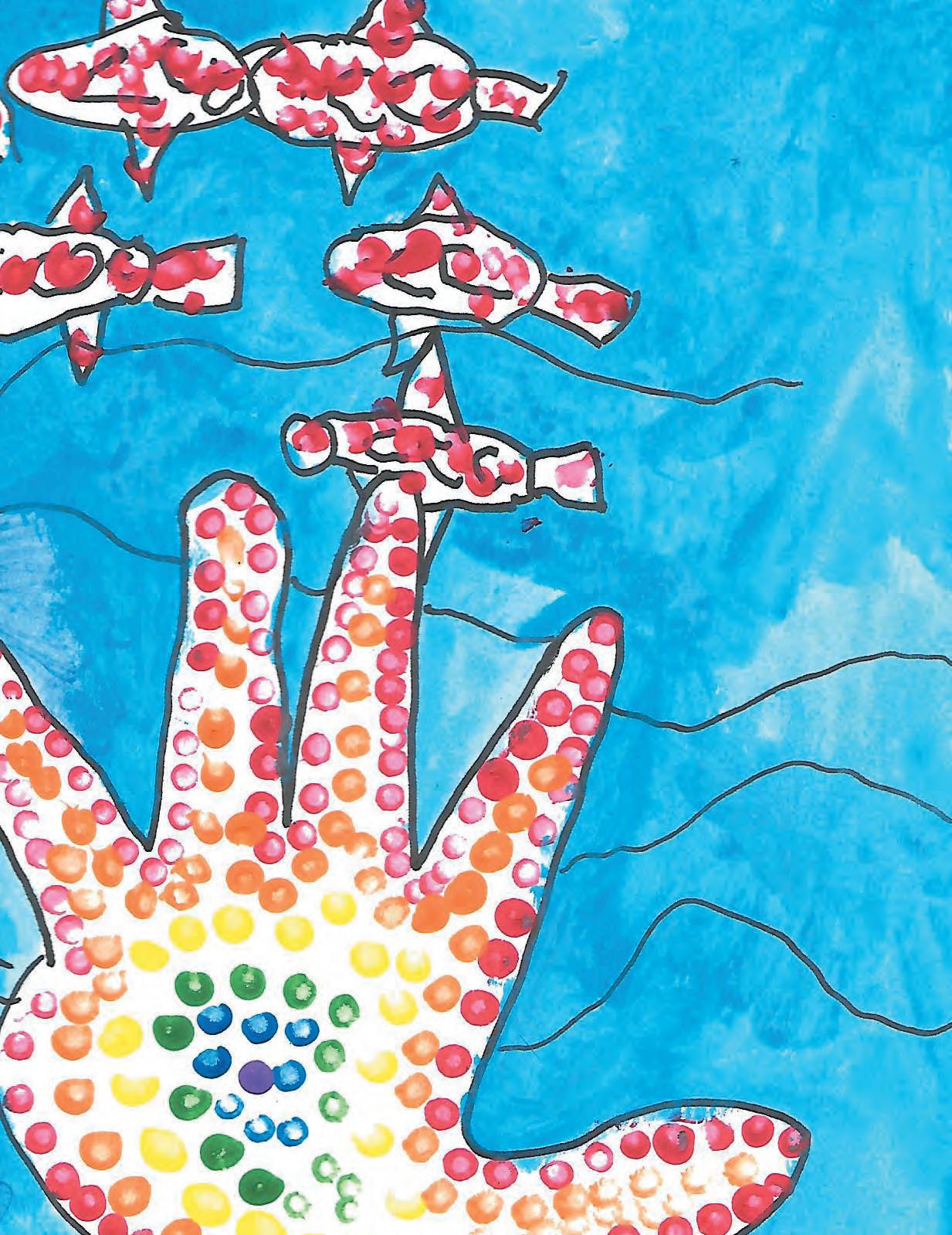
or visual arts,” Cyndi explains. “Our challenge was to do that with the limited supplies that students have at home, but they could still feel empowered through their imaginations.”
To accomplish this goal, the pair came up with a program called Passport to the Arts. “It was so different creating lessons online because I was used to seeing more than 850 students per week in my classroom,” she explains. “So, we had to try to generate that same excitement and ignite that same creativity and self-confidence online. That’s why we created Passport to the Arts, so the students can be excited by where they are going next.”
This curriculum literally takes students around the world, exploring the arts, culture, history and traditions of myriad countries. “We tried to create lessons where the student could escape some of the reality that was worrisome to them,” she explains. “But they had to be easy and fun so that families could integrate them into their learning.”
In Passport to the Arts, so far elementary students have traveled virtually to the Dominican Republic, Africa, Indonesia, Hawaii, England, France, Australia, Japan, India and Russia to name a few destinations. Projects are as varied as designing and creating African djembe drums, artistically crafting Australian didgeridoo instruments or constructing Indonesian shadow box theatre for storytelling.
Be sure to tune into the annual Coronado Schools Foundation Telethon on March 24th from 5 to 9 p.m. to learn more about the STEM and Art Pathways programs funded by CSF. Its TV game show format will also include live student and teacher performances, celebrity guest appearances and a schoolwide Lego Builders challenge with the champion crowned near the end of the show.
• Jeanmarie Bond, who has lived in Coronado for more than 20 years, is the President & CEO of Coronado Schools Foundation.
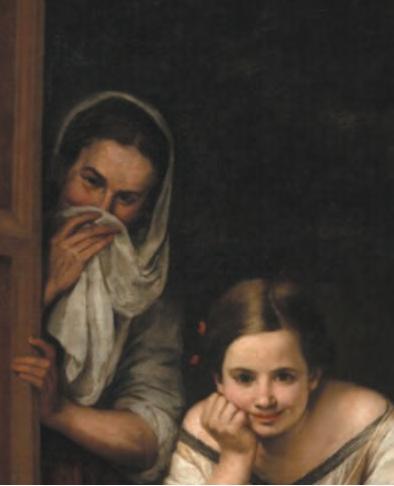
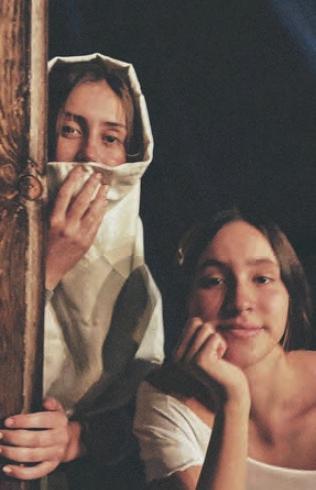
Art reproduction by CHS students Leila Gimber and Ella Oden.

Moth by Coronado Middle School student Jane Watwood.
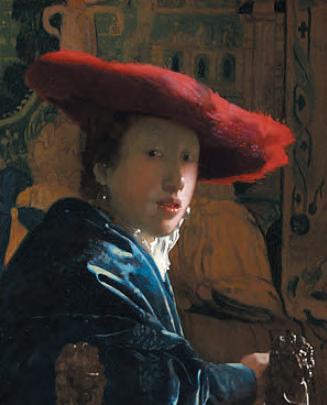
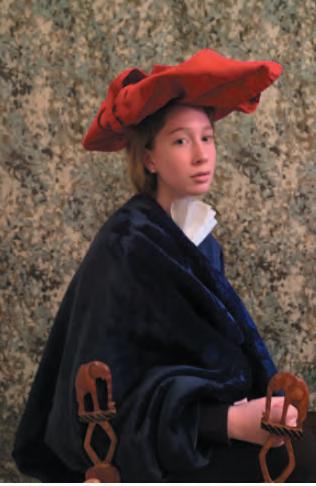
Art reproduction by CHS student Chloe Berk of "Girl With the Red Hat" by Johannes Vermeer, 1665.
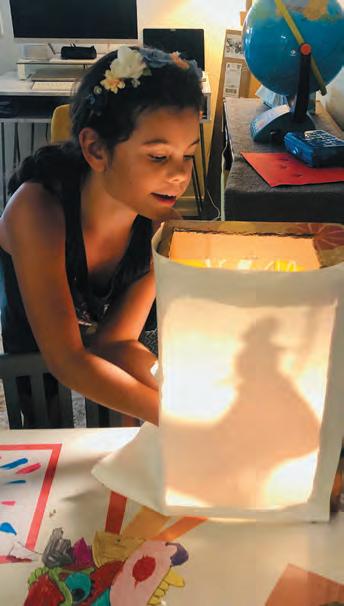
(Above) Puppet show by Silver Strand Elementary student Gracie. (Below) Djembe drum made by Grace from Village Elementary.
